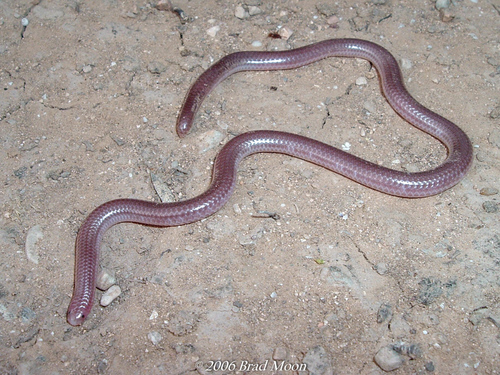
Texas Blind Snake
The Texas Blind Snake, Rena dulcis, slithers unseen beneath arid soils, its eyeless, earthworm-like form deftly hunting ants and termites. This elusive species, a master of subterranean life, is vital for ecosystem balance, reducing pest numbers while remaining a mysterious enigma of the desert landscape.
Length: 10 - 25 cm
Size
Brown, Silver, Pink
Color
Low
Aggression
Least Concern
Conservation Status
Unknown
Population Trend
Characteristics
Rena dulcis, commonly known as the Texas Blind Snake, is a small, burrowing reptile native to the southwestern United States. It thrives in dry, sandy soils and is often mistaken for an earthworm due to its smooth, pinkish body. This species lacks functional eyes, relying on touch and vibrations to navigate underground. It primarily feeds on ants and termites, playing a crucial role in controlling insect populations.
Distribution Range of the Texas Blind Snake
Rena dulcis, commonly known as the Texas Blind Snake, is native to the south-central United States and parts of northeastern Mexico. Its geographical distribution includes states such as Texas, Oklahoma, and Kansas in the U.S., and extends into Coahuila, Nuevo León, and Tamaulipas in Mexico.
Texas Blind Snake's Habitat
Environmental Conditions
The Texas Blind Snake typically inhabits arid and semi-arid regions. It is commonly found in dry, rocky soil and loose sand, often in areas with sparse vegetation such as grasslands, desert scrub, and open woodlands. The climate in these regions is characterized by hot summers and mild winters, with low to moderate rainfall.
Ecological Niche
Rena dulcis occupies a subterranean ecological niche, spending most of its life underground. It is well-adapted to burrowing in soft soil, where it hunts for small invertebrates such as ants, termites, and their larvae. The species plays a role in controlling insect populations and contributes to the aeration and mixing of soil, facilitating nutrient cycling.
Copyright @ Nature Style Limited. All Rights Reserved.
 English
English